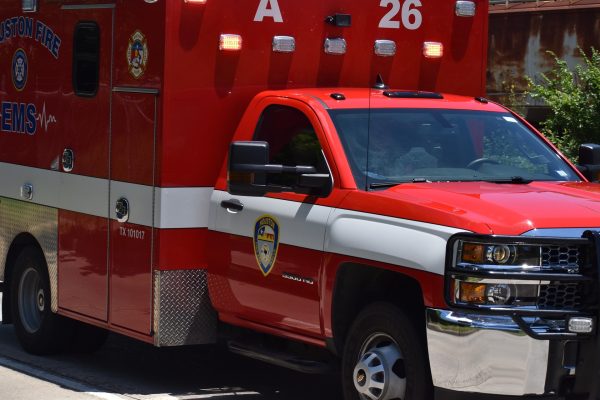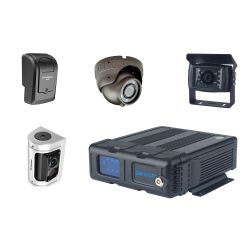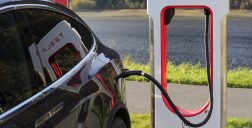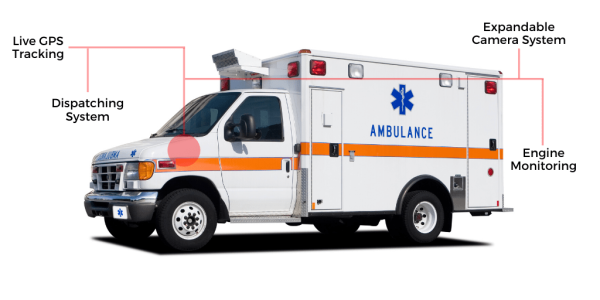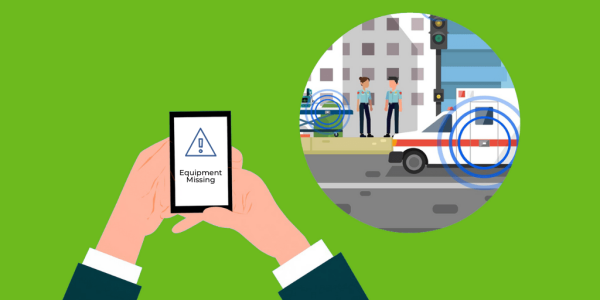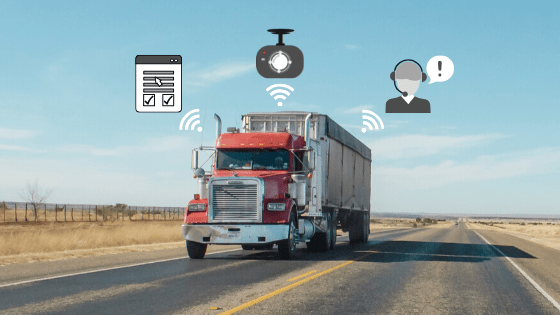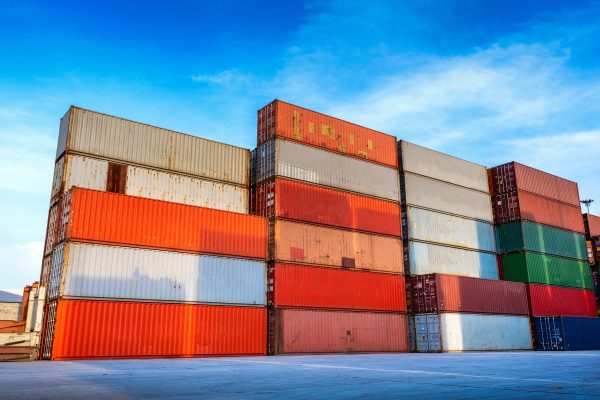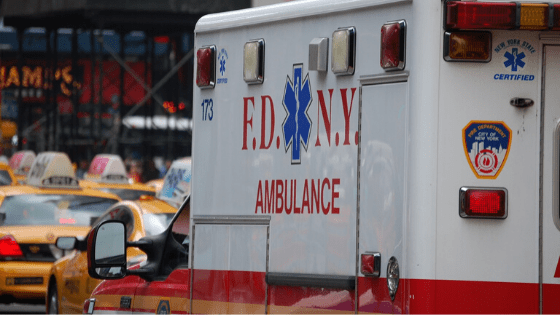
Time is of the essence for first responders as they are required to quickly respond to those in need. While in most cases they are able to arrive fast and have enough training to successfully help individuals in need, sometimes, having more data and information available could be beneficial. With this being said, many first responders, specifically paramedic and ambulance services are turning their direction to telematics technology as a way to better processes. In fact, IoT and connectivity has been known to optimize routes, track efforts, conduct maintenance, protect drivers and more. Below we discuss exactly how paramedics implement telematics to aid their efforts.
How Paramedics Implement Telematics Technology
Telematics technology is the utilization of innovative data-driven solutions that collect, transmit and analyze information. Specifically, sensors, beacons and devices that are installed onto various assets track not only where first responders are going, but what they are doing and how they are performing. In many cases, the information gathered can also be used to adjust and optimize efforts moving forward to improve performance. When speaking about first responders and ambulance services, paramedics implement telematics for various benefits relating to improved reporting, efficiency and safety. More specifically, paramedics are taking advantage of the following telematics technology;
- GPS tracking tools,
- Camera solutions,
- And software applications that analyze sensor and beacon data.
GPS Tracking Solutions
GPS tracking is a feature that is available for vehicles of any kind through tools like the Geotab GO9 device. The GO9 is an expandable GPS vehicle tracking solution that is easy to install as it has a plug-and-play installation design. Once installed, the device works quickly and almost immediately to begin pulling data from the vehicle. While tracking the GPS location of the vehicle can be assumed to be a benefit, there are also additional pros to using the device which include route tracking, record keeping and expandability opportunities.
Route Tracking And Record Keeping
Since telematic solutions are installed and programmed to automatically pull critical GPS vehicle information, ambulance fleets can rest easy knowing that accurate record keeping is always happening. This means that human error from handwritten logs or notes will be reduced drastically. Everything from the location that a team was dispatched from, to the time a vehicle arrived to a new scene can be collected and stored for later retrieval. Ensuring that if there is any reason for records to be later reviewed, the information will be correct.
Expandability
GPS tracking solutions have come a long way as they are expandable. Meaning the technology isn’t only limited to tracking the current location of an asset or recording the movement of the vehicle. Being expandable means that additional features can be utilized through the device. For example, third party integration of additional hardware (such as temperature tracking sensors, two-way communication and more) is possible through an IOX port, as well, integration can happen with software solutions to view or analyze vehicle data.
Since there are numerous add-on features, it’s always important to ask your solutions provider about what they offer in relation to your needs.
Camera Solutions
Similar to GPS tracking, camera solutions are extremely beneficial for ambulance first responders as camera systems can act as a method of protection. Since recording devices can be placed not only in-cab to face the road in front of the ambulance but around the vehicle for a 360 view, everything can be recorded. This provides the ability to visually track movement. Allowing for reliability when liability issues relating to the way a first responder was driving arise. Remember, even though vehicles are required to pull over when a first responder has their lights and sirens on, it doesn’t mean that everyone around them will always abide by that law. Sometimes collisions do happen and investigations into the movement of the vehicle need to happen.
When investigations happen, video footage can be watched and analyzed to determine what the cause was. Regardless of if the driver was at-fault, reviewing footage allows for management to determine what new procedures may need to be put into place to ensure that a driving incident does not happen again.
Software Solutions
As briefly mentioned, when paramedics implement telematics devices, large quantities of data can be collected. GPS tracking solutions, sensors and beacons can all collect information to later be transmitted to a unique software solution to view the data. In many cases, it can even allow for vehicles to optimize efforts, reduce unexpected downtime and increase equipment preparedness.
Route Optimization
Route optimization is possible with numerous telematics-GPS tracking solutions when the tracking device is paired with a dispatching software solution. This works by allowing the GPS location data of the vehicle to be synced to a map with real-time traffic or route information. Once a destination address is inputted, the software can automatically pick the closest team and optimize their directions – sending a close vehicle on the fastest and most efficient route. Without this information and capability, dispatchers risk deploying vehicles or teams who are further away with more traffic to travel through, resulting in longer arrival times. And for first responders, lengthy arrivals simply are not an option.
Route optimization is important when dispatching first responders for three reasons:
- It ensures that teams will arrive as quick as they can when time is of the essence
- Fuel can be used efficiently whenever possible as idling in traffic delays can be reduce
- The closest available team can be dispatched to reduce the time that someone is waiting for help
Staying Mobile And Real-Time Diagnosis
When paramedics implement telematics, the technology is praised as many devices can have the ability to not only read engine data to allow for real-time diagnosis, but transmit the information into software where algorithms are utilized to anticipate future maintenance. When discussing real-time diagnosis, devices can be programmed to read engine errors and codes to allow for insight to be gained. This is important if there is a sudden breakdown or vehicle issue as the device can display what the problem is. As well, in terms of anticipating maintenance, devices can collect movement data and apply that information into predetermined algorithms to know when an oil change or other preventative maintenance should be scheduled. This ensures that vehicles are always in optimal condition while lowering the risk of unexpected breakdowns. Such breakdowns are not an option as first responders need to arrive on scene as soon as they can to help the public.
Vehicle Damages
When first responders are dispatched, their vehicles and equipment must always be in tip-top shape. This requires teams to not only rely on maintenance monitoring or scheduling systems, but driver inspections as well. Without proper driver inspections procedures, teams risk driving a potentially damaged vehicle. Luckily DVIR’s (driver vehicle inspection reports) can be implemented electronically for teams to complete after they attend a scene and when they return the vehicle – noting digitally any damages such as malfunctioning lights or broken equipment inside the cab. The reports would be completed pre and post trip through form solutions rather than relying on paper documents that could be misplaced or incorrectly filled out.
Equipment Tracking And Alerts
When ambulance personnel are being dispatched, they have to think fast. Sometimes this requires them to move at a quick pace. In times like this, they could be at risk for forgetting essential supplies or equipment behind on scene! This is why paramedics implement telematics tools like tracking beacons. These tracking devices can be placed onto essential equipment to automatically transmit a signal of its location. The signal can then use a satellite or WiFi connection to track where it is located in a pre-programmed software application – sounding an alert if it’s not in the vehicle (through distance proximity) once the vehicle is in movement. Telematics tools such as this act as an automatic checklist to ensure that teams never leave essential equipment behind.
Telematics innovation continues to prove it’s place within many fields including essential personnel and first responders. As these innovative tools can boost reliability, efficiency and safety, it’s something that every first responder team must be fitted with moving forward.
To learn more about how various telematics software solutions can be customized to solve underlying needs, contact us today. We’re equipped with a team who can find a pain point you’re encountering and solve it with telematics technology.
